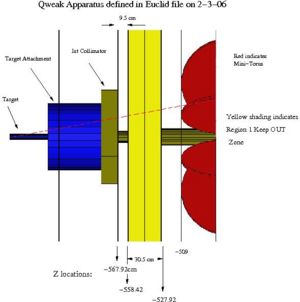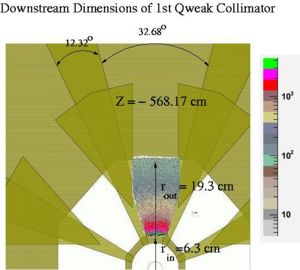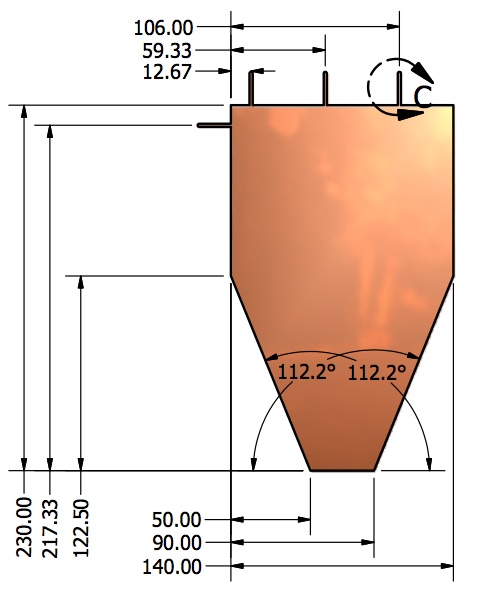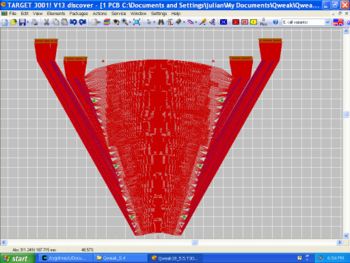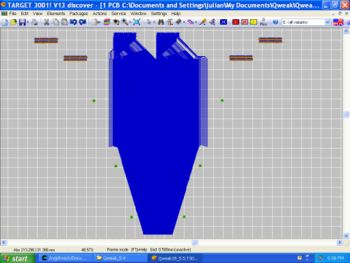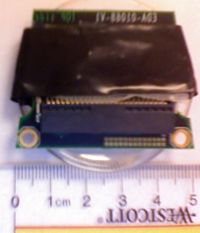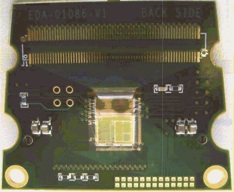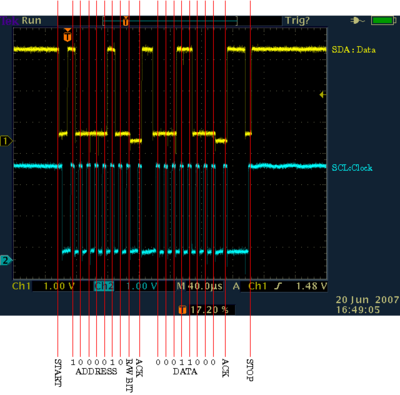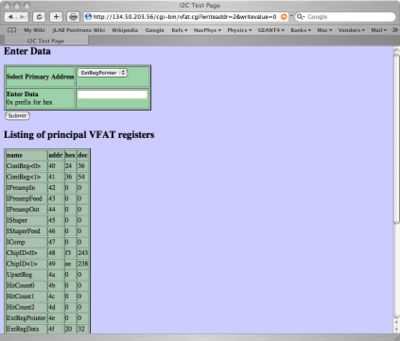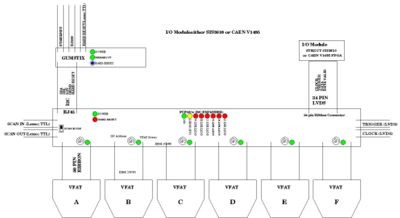Interim Report 5-18-08 AwardNum0653570
Participants
Tony Forest Principal Investigator Yes Julian Salamanca Graduate student No Tamar Didberidze Graduate student Yes Jordan Keough Undergraduate student No Jeremy Lebaron Undergraduate student Yes
Activities and Findings
This section will serve as your report to your program officer of your project's activities and findings. Please describe what you have done and what you have learned, broken down into four categories:
Describe the major research and education activities of the project.
Describe the major findings resulting from these activities.
Describe the opportunities for training and development provided by your project.
Describe outreach activities your project has undertaken.
could click "Nothing Yet to report"
What have been your major research and education activities (experiments, observations, simulations,presentations, etc.)
Qweak Region 1 Tracking System Detector Construction
The Qweak Region 1 tracking system is one of three tracking systems designed to measure the profile of elastically scattered electrons as well as the background contributions to the parity violating asymmetry. The region 1 tracking system is located behind the first collimator at a distance of about 550 cm from the main torus magnet ( 200 cm from the target) as show in the left hand figure below. The collimator divides the acceptance into 8 regions, octants, and reduces the azimuthal acceptance by almost 30 percent. The right hand figure below shows the elastci scattering profile overlayed on top of one of the octants. The Region 1 tracking system will measure the electron scattering angle at only 2 of the octants at a time and will rotate in in order to measure the electrons in the remaining octants.
The high radiation flux and the small detector footprint are two of the biggest challenges facing the Region 1 tracking system. An ionization chamber equiped with Gas Electron Multipliers (GEMs) was chosen in order to withstand the high radiation flux near the target. The GEM preamplifiers allow smaller ionization cell sizes thereby resulting in ionization chamber rise times of 50 nanoseconds or less. The ionization chamber itself is constructed from Ertalyte, a machinable plastic material which can withstand the high radiation environment. The material's strength allows the chamber to have thin walls which prevent the chamber from extending into adjacent octants.
The three major components to the Qweak Region 1 detector are the GEM preamplifiers, the charge collector, and the ionization chamber.
Preamplifier design and procurement
The figure below shows the custom designed GEM preamplifier for the Qweak Region 1 tracking system. The preamplifier is a 50 micron thick kapton foil clad on both sides with 5 microns of copper. Holes are etched into the foil such that a voltage applied across the top and bottom copper plates will create an electric field strong enough to cause charge to pass through the hole and multiply much like the avalanche region of a drift chamber. Enigneers from the Idaho Accelerator Center (IAC) designed the shape of the foils and the location of 6 tabs used for HV connections. This generic design allows one to use the part for any GEM amplification stage simply by cutting off the unused HV tabs. Although this is a simple part, it is a clear example of how the infrastructure at the IAC can be leveraged in support of our physics mission.
Charge Collector Design and procurement
The charge collector for Qweak's region 1 tracking system is shown below. The copper charge collector strips are aligned in terms of the electron scattering angle . Each of the red strips shown in the right hand figure below is 400 microns wide and will measure the elastic elctron scattering angle to within 0.1 mradians. The blue lines shown in the left hand figure are representative of the scattering angle. A large number of graduate student hours were needed to place each strip into the correct position using the charge collector design software. Software compatibility issues with the vendor were also a major time sink of several months before the part could be accurately manufactured according to our specifications. This single part represents the bulk of a graduate students effort for the past 6 months.
Ionization Chamber Construction
The ionization chamber for the Qweak Region 1 tracking system needed to have a small profile in order to be placed a half meter after the target. A collimator in front of this detector divides the electron scattering anglular range into octants which reduce the angular acceptance range by 20 percent due the collimator material blocking The goal was to construct a chamber which did not interfere with the other octants.
Qweak readout electronics
VFAT board
I2C communication
Readout switchyard
The lines of communication between the VFAT readout board, the Gumstick controller, and the VME FPGA I/O module are manages by a signal switchyard being designs at ISU by two students. Brian Oborn, a technician from the IAC, is mentoring Jordan
R3 tests
What are your major findings from the activities identified above
Qweak readout electronics
Spead test results
VFAT communication protocols
Publications and Products
In this section, you will be asked to describe the tangible products coming out of your project. Specifically:
What have you published as a result of this work? Journal publications
Books or other non-periodical, one-time publications
What Web site or other Internet site have you created?
What other specific products (databases, physical collections, educational aids, software, instruments, or the like) have you developed?
What have you published as a result of this work?
Journal publications
Books or other non-periodical, one-time publications
What Web site or other Internet site have you created?
Wiki
What other specific products (databases, physical collections, educational aids, software, instruments, or the like) have you developed?
Contributions
Now we invite you to explain ways in which your work, your findings, and specific products of your project are significant. Describe the unique contributions, major accomplishments, innovations and successes of your project relative to :
the principal discipline(s) of the project;
other disciplines of science or engineering;
the development of human resources;
the physical, institutional, or information resources that form the infrastructure for research and education; and
other aspects of public welfare beyond science and engineering, such as commercial technology, the economy, cost-efficient environmental protection, or solutions to social problems.
